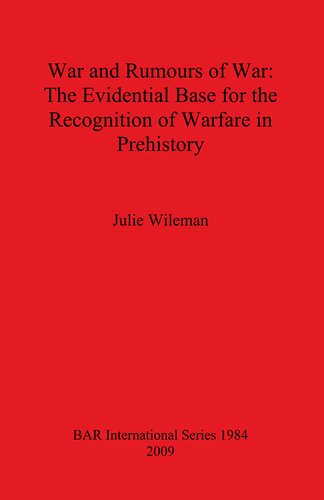

Most ebook files are in PDF format, so you can easily read them using various software such as Foxit Reader or directly on the Google Chrome browser.
Some ebook files are released by publishers in other formats such as .awz, .mobi, .epub, .fb2, etc. You may need to install specific software to read these formats on mobile/PC, such as Calibre.
Please read the tutorial at this link: https://ebookbell.com/faq
We offer FREE conversion to the popular formats you request; however, this may take some time. Therefore, right after payment, please email us, and we will try to provide the service as quickly as possible.
For some exceptional file formats or broken links (if any), please refrain from opening any disputes. Instead, email us first, and we will try to assist within a maximum of 6 hours.
EbookBell Team

5.0
38 reviewsThe goal of this study is to examine the potential for the understanding and recognition of the processes and occurrence of prehistoric warfare through the development of a series of correlates, resulting in testable models that can be applied to the archaeological record. Such models need to be flexible and applicable across different periods and in a variety of geographical areas. To this purpose, examples of evidence are included from a wide spectrum of sources. After offering definitions of warfare and considering the nature of its archaeological evidence, the correlates and models will, for comparative purposes, be applied to a number of case studies which are located in later prehistoric societies. This study, therefore, provides models (from the UK, France and the US), for investigation, suggests some areas for research and data-gathering, and highlight potentials and problems for the interpretation of evidence, providing some frameworks for future appreciations of the concept of prehistoric war. If evidence can be sought and recognised for warfare on more extended scales, it may be possible to approach the questions of the prevalence, scale and influence of conflict on the development of societies with a little more certainty. The aim is to encourage further debate on the range of potential evidence and its value in this sphere of archaeological research.